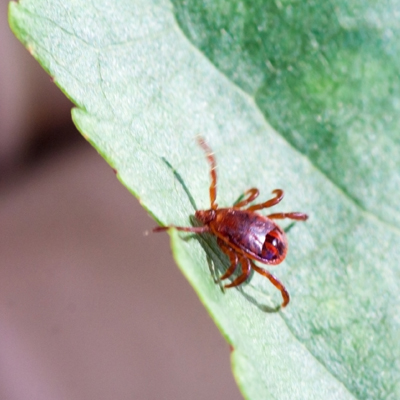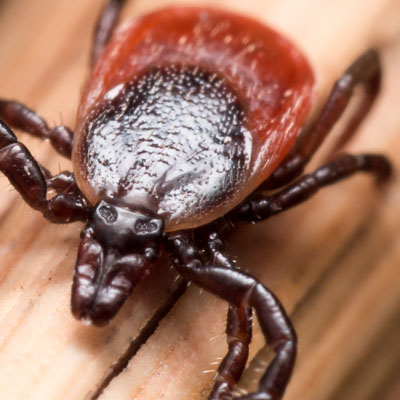As the temperatures continue to climb and the days get longer, ticks become more active, and they’re hungry. The fact of the matter is, the longer periods of sunlight is a sign for ticks to begin feeding again, which means they’re on the hunt for their next blood meal right now.

Ticks are common transmitters of Lyme disease, Rocky Mountain spotted fever, and tularemia, among other diseases. Protecting your home against ticks this spring is a must, as you, your family, and your pets are prime targets as their next meal. So, here is your guide to protecting your home and loved ones from ticks this spring.
Know The Ticks Life Cycle
The first step in preventing ticks this spring is understanding their life cycle. Their two-year life cycle begins in the fall, where the eggs hatch and the first feedings occur. The larvae then lie dormant in the winter (note: blacklegged ticks do not lie dormant, but they do slow down), and when they awake in the early spring, they’re hungry. This is when they’re most dangerous, and this is when you will want to be most aware and prepared.
Know The Ticks Habitat
Next, you will want to make yourself aware of where ticks like to hide out as they wait for a potential meal to pass by. The most common place they’ll hide is in the woods where there is plenty of shade, tree, and leaf cover. Meaning if you and/or your pets venture through the woods, you will always want to do a thorough inspection for ticks before returning home.
Some other common tick habitats include:
- Areas where there is tall brush or grass
- Under leaves or lawn debris
- Underneath plants, shrubs, and trees where there is shade and a place to hide
- Under mulch or inside/near wood piles
Know How To Identify Ticks
The two most common ticks in Massachusetts are:
- The black-legged (deer) tick – The easiest way to identify deer ticks is by their scutum, which looks like a dark red shield covering a portion of their back. This shield, however, is only on female ticks. The larvae have six legs and have a light red color, while the adults have eight legs and appear to have a dark red coloring.
- The dog tick – Similar to the black-legged tick, both the larvae and adult tick have a red coloring. However, all dog ticks have white markings on their back and legs, which distinguish them from all other ticks.
Know How To Protect Against Ticks
Knowing the tick’s life cycle and preferred habitat, along with knowing how to identify common Massachusetts’s ticks are all-important ways to protect and prevent against the possibility of a tick bite. But there are further measures you can take to help with this!

First, to help protect you and your family, you will always want to do what you can to prevent the possibility of skin exposure in a tick-infested area (see tick habitats above!) This may include wearing long sleeves and long pants, tucking your pants into your socks, and wearing close-toed shoes. Second, you will always want to do a thorough inspection for ticks upon arrival home. This includes using a comb to check through your hair (don’t forget to check your pets!) Lastly, in the unfortunate case that a tick is found, remain calm and remove the tick properly. Remember, it takes at least 24 hours before the tick-borne diseases are passed, so don’t panic!
Call The Professionals
At Pest Control Unlimited, we understand the threat ticks pose to your home and to your loved ones. That’s why we developed our tick control prevention program. Our technicians have the knowledge, training, and experience to give you the peace of mind knowing you have continuous protection from the possibility of a tick infestation.
Protect your home today and contact us here, or at (888) 649-9919!

